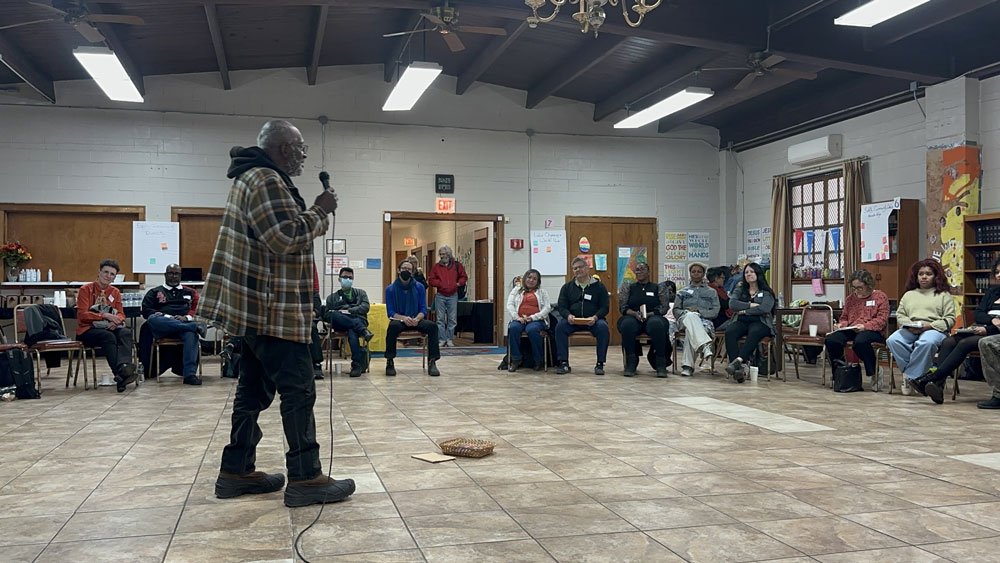
InTeen Vogue’s latest article in its Civil Discourse 101 series, called “How to Be An Activist When You’re Unable to Attend Protests,” a reader wrote in to ask: “I am disabled and have severe claustrophobia. Is there any way I can help besides showing up at rallies and marches?”
A staff member from Amnesty International, Teen Vogue’s partner in the series, gave a thoughtful response that includes other ways to get involved in social justice movements as well as making a plea for the movements to be more inclusive of those with disabilities.
Wait, Teen Vogue has a series on civil discourse?
Yes. It also currently has an in-depth story on youth incarceration and a news and politics section that features breaking news and columns focused unapologetically on social justice and race.
After the Civil Discourse column on how to participate in social movements, Teen Vogue suggests you might be interested in reading a trenchant column by Lauren Duca looking at Fox News’ obsessing about cheese placement on a hamburger emoji on the same day that the indictments came down against former Trump campaign chair Paul Manafort.
Duca has a regular column called “Thigh-High Politics” with a mandate “that breaks down the news, provides resources for the resistance, and just generally refuses to accept toxic nonsense.”
The Civil Discourse/Amnesty International protest column also suggested that you might want to read about Selena Gomez’ and Justin Bieber’s private dinner at a restaurant they had closed for the occasion— along with a glowing review of Gomez’s outfit.
Sign up for our free newsletters
Subscribe to NPQ's newsletters to have our top stories delivered directly to your inbox.
By signing up, you agree to our privacy policy and terms of use, and to receive messages from NPQ and our partners.
This is still Teen Vogue, after all.
“Our core demographic had already woken up to you know all of these issues,” said Teen Vogue editor Elaine Welteroth in an interview with the Chicago Tribune. “They stand up for what is right, they care about human rights, they care about civil rights, and they will be on the front lines; they also care about Bieber and want to know what the best bronzer is and there is no shame in being both.”
Though the magazine has garnered much attention outside its usual demographic for its hard-hitting political coverage, owner Condé Nast—as part of cuts throughout the corporation—announced at the end of October that it would be eliminating Teen Vogue’s print edition, though the magazine will continue online. This elimination is part of a broader cut in print production across Condé Nast: According to , “GQ, Glamour, Allure and Architectural Digest will go from 12 issues to 11; Bon Appétit will go from 11 issues to 10, and W and Condé Nast Traveler will now have eight issues, down from 10. Teen Vogue, which had published five issues a year, will close its print edition.” A statement from Condé Nast, quoted by the New York Times, read, “We are aggressively investing in the brand and all of its consumer touchpoints, including events like the upcoming inaugural Teen Vogue Summit next month in Los Angeles.“ Elaine Welteroth, the much-praised editor of Teen Vogue who has spearheaded its new political bent, remains at Condé Nast. It’s likely that the disappearance of the print editions won’t mean much to the magazine’s millennial readership, especially as the online offerings expand.
Teen Vogue’s political and social awakening happened before the 2016 presidential campaign and subsequent Trump presidency. After years of being a teen version of its namesake that featured mostly white and famous cover models, a 2015 cover featuring three relatively unknown black models became the year’s best seller, reports the New York Times.
Editors saw this as a sign that its young readers were craving more real life alongside high fashion, and Welteroth was charged with redesigning a magazine that was more diverse in terms of race, ethnicity, sexual orientation, and fashion sense.
Readers noticed the change.
“I’ve always been a queer, gender non-conforming kid and person. I never really cared about magazines like that because I never really saw myself in them at all, in any way,” Kate Lesniak, publisher of Bitch Media, told the New York Times.
But, she added, in the last couple of years, Teen Vogue had become “a mainstream media outlet in print that reflected people like me back to ourselves. Teen Vogue did an incredible job of amplifying communities of color and queer people as well.”—Nancy Young











